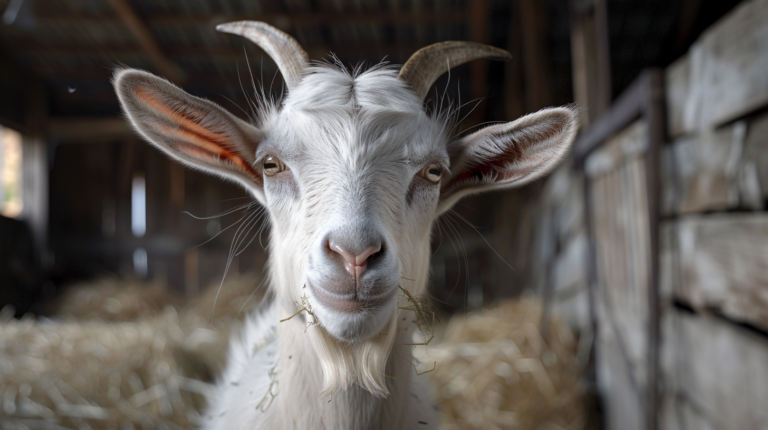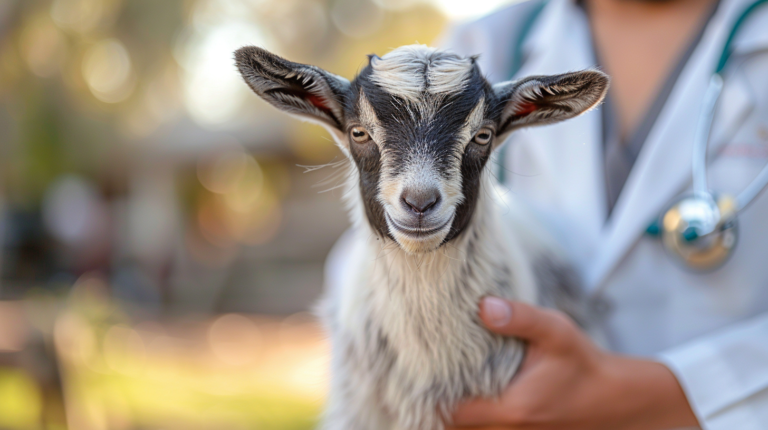Recognize chemical poisoning in goats with these 5 urgent warning signs. Learn immediate treatment steps, prevention tips, and when to call your veterinarian for emergency care.
Table of Contents
Chemical poisoning in goats represents one of the most serious emergency situations that goat owners can face. Whether you’re a seasoned rancher or a backyard goat enthusiast, understanding the warning signs and knowing how to respond quickly can mean the difference between life and death for your animals. Chemical poisoning in goats can occur from various sources, including toxic plants, contaminated feed, household chemicals, and agricultural products that may seem harmless but prove deadly to these curious ruminants.
Every year, thousands of goats suffer from chemical poisoning incidents, many of which could be prevented with proper knowledge and immediate action. The key to successful treatment lies in rapid recognition of symptoms and swift intervention. This comprehensive guide will equip you with the essential knowledge to protect your goats from chemical poisoning and respond effectively when emergency situations arise.
Understanding Chemical Poisoning in Goats: The Hidden Dangers
| Toxin Category | Common Sources | Severity Level | Onset Time | Primary Symptoms |
|---|---|---|---|---|
| Toxic Plants | Rhododendron, Azalea, Oleander, Wild Cherry | High | 1-6 hours | Weakness, difficulty breathing, dilated pupils |
| Agricultural Chemicals | Pesticides, Herbicides, Fertilizers | High | 30 minutes – 2 hours | Vomiting, diarrhea, seizures, tremors |
| Household Products | Antifreeze, Cleaning agents, Paint | High | 15 minutes – 4 hours | Unsteady gait, drooling, bloat |
| Mycotoxins | Contaminated feed, Moldy grain | Moderate | 2-12 hours | Loss of appetite, weight loss, weakness |
| Heavy Metals | Lead paint, Old batteries, Galvanized metal | Moderate | 6-24 hours | Neurological symptoms, blindness, anemia |
| Copper Toxicity | Mineral supplements, Copper sulfate | Moderate | 12-48 hours | Dark urine, jaundice, weakness |
Chemical poisoning in goats occurs when these animals ingest, inhale, or absorb toxic substances that disrupt their normal physiological functions. Unlike other livestock, goats are particularly susceptible to chemical poisoning due to their curious nature and indiscriminate browsing habits. They tend to sample various plants, objects, and substances in their environment, often without the natural aversion that protects many other animals.
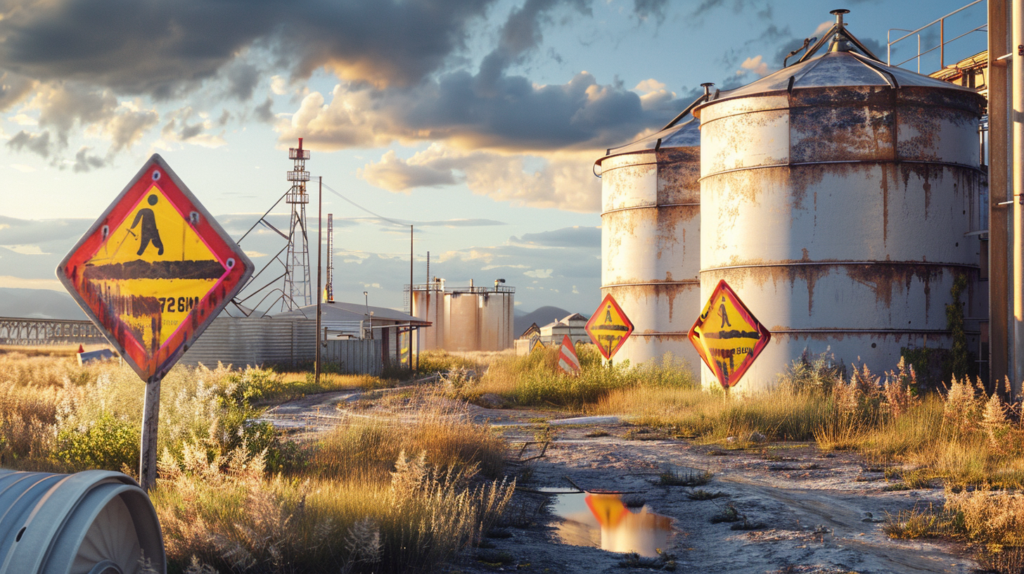
The digestive system of goats, while efficient at processing a wide variety of plant materials, can also efficiently absorb and concentrate toxic compounds. This makes them especially vulnerable to both acute and chronic chemical poisoning incidents. Understanding the most common sources of chemical poisoning helps goat owners take proactive measures to protect their herds.
Common Sources of Chemical Poisoning
Plant-Based Toxins: Many ornamental and wild plants contain natural chemicals that are highly toxic to goats. Rhododendron and azalea plants contain grayanotoxins that can cause severe poisoning, with mortality rates reaching 36.6% in field cases. Other dangerous plants include oleander, yew, cherry laurel, and various species of poisonous weeds that may grow in pastures.
Agricultural Chemicals: Pesticides, herbicides, and fertilizers represent significant threats to goat health. These chemicals can contaminate pastures, water sources, and feed supplies. Even small amounts of certain agricultural chemicals can cause severe poisoning in goats.
Household Products: Many common household items pose serious risks to goats. Antifreeze, rat poison, cleaning products, and paint can all cause fatal poisoning. Goats’ curiosity often leads them to investigate and taste these substances if they’re accessible.
Contaminated Feed: Moldy or contaminated feed can contain mycotoxins and other harmful compounds. Additionally, feed that has been stored near chemicals or in contaminated areas can absorb toxic substances.
Heavy Metals: Lead paint, battery acid, and other heavy metal sources can cause chronic poisoning in goats. Lead toxicity is particularly concerning as it can cause neurological damage and death.
The 5 Urgent Signs of Chemical Poisoning in Goats
Recognizing the early warning signs of chemical poisoning in goats is crucial for successful treatment. The symptoms can vary depending on the type of chemical involved, the amount consumed, and the individual goat’s sensitivity. However, there are five critical signs that should immediately alert you to a potential poisoning emergency.
1. Respiratory Distress and Breathing Difficulties

One of the most alarming signs of chemical poisoning in goats is respiratory distress. Clinical signs will occur a few hours post ingestion and include weakness, unsteady gait, difficulty breathing, bloat, and dilated pupils. Affected goats may exhibit:
- Labored breathing: Goats will struggle to breathe, often with visible effort in their chest and abdominal muscles
- Rapid breathing rate: Normal respiratory rate increases significantly as the body attempts to compensate for reduced oxygen uptake
- Open-mouth breathing: Goats may breathe through their mouths instead of their noses, indicating severe respiratory compromise
- Abnormal lung sounds: Wheezing, crackling, or gurgling sounds may be audible during breathing
- Blue or pale gums: Cyanosis indicates poor oxygen circulation and requires immediate veterinary attention
Respiratory symptoms often develop within hours of exposure and can progress rapidly. The main clinical signs were motor incoordination, generalized muscle tremors, broad-based posture, tachypnea, tachycardia, vocalization and respiratory distress. This progression from initial exposure to severe respiratory distress can happen faster than many owners anticipate.
2. Neurological Symptoms and Behavioral Changes

Chemical poisoning often affects the nervous system, causing dramatic changes in behavior and neurological function. These symptoms can be particularly frightening for goat owners but provide crucial diagnostic information.
Neurological manifestations include:
- Disorientation and confusion: Goats may appear lost, walk in circles, or fail to recognize familiar surroundings
- Tremors and muscle spasms: Involuntary muscle movements can range from subtle trembling to severe convulsions
- Lack of coordination: Goats may stagger, stumble, or have difficulty maintaining balance
- Altered consciousness: Animals may appear depressed, overly excited, or completely unresponsive
- Seizures: In severe cases, goats may experience full seizures requiring immediate emergency intervention
Signs of lead toxicity include blindness, head pressing, disorientation and abdominal pain. The vet should be contacted urgently because treatment in the early stages tend to be more successful. The neurological symptoms often provide clues about the type of chemical involved and help veterinarians determine the most appropriate treatment approach.
3. Gastrointestinal Distress and Digestive Issues
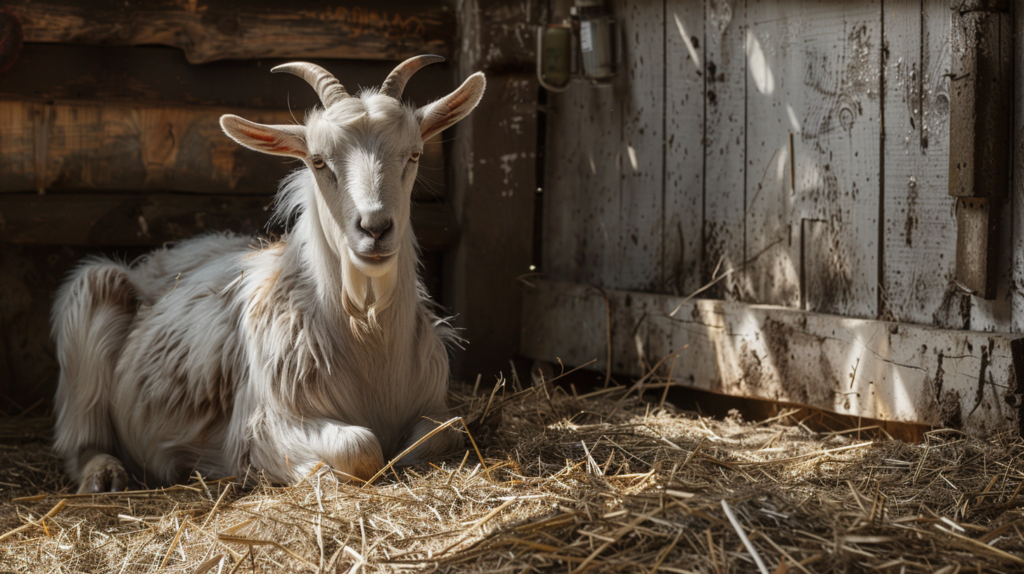
The digestive system is frequently the first to show signs of chemical poisoning, as most toxic substances enter the body through ingestion. Gastrointestinal symptoms can range from mild discomfort to severe, life-threatening complications.
Key gastrointestinal symptoms include:
- Excessive salivation: Goats may drool excessively or produce thick, foamy saliva
- Vomiting and regurgitation: While goats rarely vomit, chemical poisoning can cause this unusual symptom
- Diarrhea or constipation: Digestive upset can manifest as either loose stools or complete inability to defecate
- Abdominal pain: Goats may show signs of pain by arching their backs, grinding their teeth, or assuming unusual postures
- Loss of appetite: Complete refusal to eat is a serious sign that requires immediate attention
Symptoms of poisoning include wailing, salivating, white foam, or green slime around lips and/or vomiting. Do not orally administer any products if your goat is actively vomiting. These gastrointestinal symptoms often appear first and can provide the earliest warning of a poisoning incident.
4. Cardiovascular Symptoms and Circulation Problems
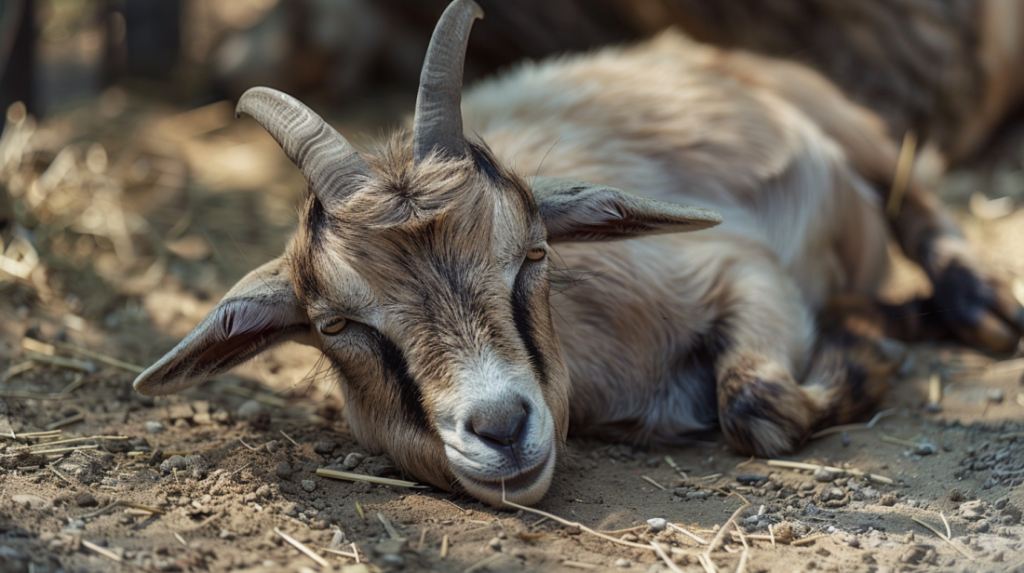
Chemical poisoning can severely affect the cardiovascular system, leading to life-threatening complications. These symptoms may be subtle initially but can progress rapidly to cardiac arrest if not addressed promptly.
Cardiovascular warning signs include:
- Rapid or irregular heartbeat: The heart may beat too fast, too slow, or with irregular rhythm
- Weak pulse: Pulse may be difficult to detect or unusually weak
- Pale or blue mucous membranes: Gums, inner eyelids, and other mucous membranes may appear pale or blue
- Cold extremities: Ears, legs, and tail may feel unusually cold to the touch
- Collapse or weakness: Severe cardiovascular compromise can lead to collapse or inability to stand
cantharidin may experience symptoms such as diarrhea, depression, abdominal pain, recumbency, increased heart and respiratory rate, dehydration, frequent urination, and in severe cases, death. Cardiovascular symptoms often indicate that the poisoning has progressed to a critical stage requiring immediate emergency intervention.
5. Severe Dehydration and Electrolyte Imbalance

Chemical poisoning can rapidly lead to severe dehydration and electrolyte imbalances through various mechanisms, including vomiting, diarrhea, and metabolic disruption. These imbalances can be life-threatening if not corrected promptly.
Signs of severe dehydration include:
- Sunken eyes: Eyes may appear receded into the skull
- Dry mucous membranes: Gums and mouth may feel sticky or dry
- Skin tent test: When pinched, skin may remain tented for several seconds
- Reduced urine output: Goats may produce little or no urine
- Weakness and lethargy: Severe dehydration causes profound weakness and collapse
The main clinical signs were apathy, anorexia, soft feces, weight loss, and severe dehydration. Dehydration can develop rapidly in chemical poisoning cases and requires immediate fluid therapy to prevent organ failure and death.
| Severity Level | Observable Symptoms | Action Required | Timeframe |
|---|---|---|---|
| Emergency |
|
Immediate veterinary emergency Transport to clinic immediately |
Minutes matter |
| Urgent |
|
Contact veterinarian immediately Prepare for transport |
Within 1 hour |
| Moderate |
|
Schedule veterinary visit Monitor closely |
Within 2-4 hours |
| Early Warning |
|
Remove from toxin source Call veterinarian for advice |
Within 6-12 hours |
Emergency Response Protocol: What to Do When You Suspect Chemical Poisoning
When you suspect chemical poisoning in goats, every minute counts. Having a clear emergency response protocol can save your goat’s life and prevent further complications. The key is to act quickly while ensuring your own safety and gathering crucial information for veterinary treatment.
Immediate Safety Assessment
Before approaching the affected goat, ensure your own safety. If the poisoning source is still present, remove it immediately to prevent further exposure. This might involve:
- Removing contaminated feed or water sources
- Clearing access to toxic plants or chemicals
- Ventilating areas with chemical fumes
- Wearing protective equipment if handling dangerous substances
Veterinary Contact and Information Gathering
Contact your veterinarian immediately, even if symptoms seem mild. Prepare the following information:
- Time of suspected exposure: When did you first notice symptoms or suspect poisoning?
- Suspected toxin: What chemical or substance do you believe caused the poisoning?
- Amount consumed: Estimate how much of the toxic substance was consumed
- Number of animals affected: Are multiple goats showing symptoms?
- Current symptoms: Describe all symptoms you’ve observed
- Goat’s vital information: Age, weight, breed, and general health status
First Aid Measures
While waiting for veterinary assistance, you can take several first aid measures:
For Ingested Toxins:
- Remove any remaining toxic material from the goat’s mouth
- Do not induce vomiting unless specifically instructed by a veterinarian
- Activated charcoal (1–3 g/kg) can be given if available and recommended by your veterinarian
- Provide fresh water if the goat is conscious and able to swallow
For Respiratory Distress:
- Move the goat to fresh air immediately
- Keep the airway clear of mucus or debris
- Monitor breathing closely and be prepared to perform rescue breathing if necessary
For Skin Contact:
- Flush affected areas with large amounts of clean water
- Remove contaminated bedding or materials
- Wear gloves to protect yourself from chemical exposure
Documentation and Sample Collection
If possible, collect samples of the suspected toxin for veterinary analysis. This can significantly help with diagnosis and treatment decisions. Store samples in clean containers and label them clearly with the date and suspected source.
Photograph the affected goat and any symptoms if possible. This documentation can be valuable for veterinary consultation and insurance purposes.
Comprehensive Treatment Strategies for Chemical Poisoning
Treatment of chemical poisoning in goats requires a multi-faceted approach that addresses both the specific toxin and the goat’s overall condition. The most effective treatment plans combine immediate supportive care with specific antidotes when available.
Veterinary Treatment Protocols
Decontamination Procedures: Professional decontamination is often the first step in treatment. This may include:
- Gastric lavage (stomach pumping) for recently ingested toxins
- Activated charcoal administration to bind toxins in the digestive system
- Cathartic agents to speed elimination of toxins
- Skin decontamination for external exposure
Supportive Care Measures: Most chemical poisoning cases require intensive supportive care:
- Fluid therapy: Intravenous fluids to combat dehydration and support kidney function
- Electrolyte correction: Replacement of lost electrolytes to maintain normal body function
- Respiratory support: Oxygen therapy or mechanical ventilation in severe cases
- Cardiovascular support: Medications to stabilize heart rate and blood pressure
- Nutritional support: Feeding tubes or intravenous nutrition for goats unable to eat
Specific Antidotes: When available, specific antidotes can dramatically improve outcomes:
- Atropine: For organophosphate poisoning
- Naloxone: For opioid toxicity
- Calcium EDTA: For lead poisoning
- Methylene blue: For nitrate poisoning
Monitoring and Follow-up Care
Recovery from chemical poisoning requires careful monitoring and follow-up care. Key monitoring parameters include:
- Vital signs: Temperature, heart rate, respiratory rate, and blood pressure
- Neurological status: Mental alertness, coordination, and response to stimuli
- Kidney function: Urine output and blood chemistry values
- Liver function: Enzyme levels and other liver function tests
- Overall condition: Appetite, activity level, and general well-being
Long-term Recovery Considerations
Some goats may experience long-term effects from chemical poisoning, including:
- Liver damage: Chronic liver disease requiring ongoing management
- Kidney dysfunction: Reduced kidney function necessitating dietary modifications
- Neurological deficits: Permanent neurological changes affecting behavior or mobility
- Reproductive issues: Fertility problems or birth defects in offspring
| Time Phase | Diagnostic Steps | Treatment Actions | Expected Outcomes | Critical Notes |
|---|---|---|---|---|
| 0-30 min |
|
|
Symptom stabilization or progression identification |
Never give oral treatments if goat is vomiting or unconscious
|
| 30-60 min |
|
|
Stabilization of vital functions |
Activated charcoal contraindicated for petroleum products
|
| 1-6 hours |
|
|
Symptom improvement or organ function stabilization |
Mortality risk highest in first 6 hours – intensive monitoring required
|
| 6-24 hours |
|
|
Neurological recovery begins, appetite returns |
Some toxins cause delayed effects – extended monitoring essential
|
| 1-7 days |
|
|
Full recovery or identification of permanent effects |
Some toxins may cause lasting neurological or organ damage
|
Prevention Strategies: Protecting Your Goats from Chemical Hazards
Prevention remains the most effective strategy for protecting goats from chemical poisoning. A comprehensive prevention plan addresses all potential sources of toxic exposure and creates multiple layers of protection.
Environmental Management
Pasture Safety:
- Regularly inspect pastures for toxic plants and remove them immediately
- Maintain proper fencing to prevent access to dangerous areas
- Test soil and water sources for contamination
- Avoid grazing in areas recently treated with chemicals
Feed and Water Security:
- Source feed from reputable suppliers with quality control programs
- Store feed in clean, dry areas away from chemicals
- Regularly test water sources for contamination
- Use dedicated equipment for feed handling to prevent cross-contamination
Chemical Storage and Handling:
- Store all chemicals in locked, well-ventilated areas away from animal areas
- Use proper labeling and safety signage
- Maintain current safety data sheets for all chemicals
- Train all personnel in proper chemical handling procedures
Education and Training
Owner Education:
- Learn to identify common toxic plants in your area
- Understand proper chemical handling and storage procedures
- Know the signs of chemical poisoning and emergency response protocols
- Maintain current contact information for veterinary services
Staff Training:
- Ensure all farm personnel understand chemical safety protocols
- Provide regular training updates on new hazards and safety procedures
- Establish clear protocols for chemical use and disposal
- Create emergency response plans and practice them regularly
Regular Health Monitoring
Routine Examinations:
- Schedule regular veterinary check-ups to monitor goat health
- Conduct periodic blood tests to screen for chemical exposure
- Monitor growth rates and reproductive performance
- Document any unusual symptoms or behaviors
Environmental Monitoring:
- Regularly test soil and water for chemical contamination
- Monitor air quality in barn and housing areas
- Inspect equipment for chemical residues
- Maintain records of all chemical applications and environmental conditions
Case Studies: Real-World Examples of Chemical Poisoning in Goats
Understanding real-world cases of chemical poisoning helps illustrate the importance of recognition and rapid response. These case studies provide valuable lessons for goat owners and highlight the diverse ways chemical poisoning can occur.
Case Study 1: Rhododendron Poisoning in a Backyard Herd
Background: A suburban family with three pet goats noticed their animals showing signs of distress after a spring storm knocked branches from ornamental rhododendron bushes into their pasture.
Symptoms Observed:
- Excessive salivation and drooling
- Difficulty breathing and rapid respiratory rate
- Weakness and inability to stand
- Regurgitation of stomach contents
Treatment and Outcome: The owners quickly removed the plant material and contacted their veterinarian. Mortality can be high in goats with grayanotoxicosis; in the 60 field cases described above 22 goats died, a mortality rate of 36.6%. However, due to rapid intervention, all three goats survived with intensive supportive care including fluid therapy and activated charcoal administration.
Lessons Learned:
- Ornamental plants can be extremely dangerous to goats
- Rapid removal of the toxin source is crucial
- Early veterinary intervention significantly improves outcomes
- Prevention through proper landscaping is the best approach
Case Study 2: Lead Poisoning from Paint Contamination
Background: A goat owner discovered several of their animals showing neurological symptoms after the goats had access to an old barn with peeling lead-based paint.
Symptoms Observed:
- Disorientation and head pressing
- Blindness and lack of coordination
- Seizures in severely affected animals
- Abdominal pain and digestive upset
Treatment and Outcome: Signs of lead toxicity include blindness, head pressing, disorientation and abdominal pain. The vet should be contacted urgently because treatment in the early stages tend to be more successful. Treatment involved chelation therapy with calcium EDTA and supportive care. Two goats made full recoveries, while one suffered permanent neurological damage.
Lessons Learned:
- Old buildings can harbor hidden dangers
- Lead poisoning can cause permanent damage
- Early treatment is essential for good outcomes
- Regular property inspections help identify hazards
Case Study 3: Pesticide Contamination in Commercial Feed
Background: A commercial goat operation experienced multiple animal deaths after feeding what appeared to be normal commercial feed that had been contaminated with pesticides during transport.
Symptoms Observed:
- Sudden onset of severe symptoms across multiple animals
- Neurological signs including tremors and seizures
- Gastrointestinal distress with vomiting and diarrhea
- Rapid progression to death in severely affected animals
Treatment and Outcome: Despite aggressive treatment, several animals died before the contamination source was identified. Once the contaminated feed was removed and supportive care provided, the remaining animals gradually recovered.
Lessons Learned:
- Commercial feed can sometimes be contaminated
- Multiple animals showing similar symptoms suggests a common source
- Immediate removal of suspected toxins is crucial
- Working with feed suppliers to ensure quality control is important
Creating an Emergency Response Plan
Every goat owner should have a comprehensive emergency response plan for chemical poisoning incidents. This plan should be easily accessible and regularly updated to ensure effectiveness when needed.
Essential Components of Your Emergency Plan
Contact Information:
- Primary veterinarian contact information
- After-hours emergency veterinary services
- Poison control hotlines
- Local animal control services
- Insurance company contact information
Supply Inventory:
- First aid supplies including activated charcoal
- Clean water and buckets
- Flashlights and batteries
- Thermometer and basic medical supplies
- Camera for documentation
Action Checklists:
- Step-by-step procedures for different types of poisoning
- Information gathering templates
- Sample collection procedures
- Documentation requirements
Prevention Maintenance:
- Regular inspection schedules
- Chemical inventory and storage procedures
- Training requirements for family members or staff
- Emergency contact trees for larger operations
Regular Plan Updates and Training
Quarterly Reviews:
- Update contact information
- Check and replenish supply inventories
- Review procedures with all family members or staff
- Practice emergency response scenarios
Annual Comprehensive Updates:
- Assess new chemical hazards on the property
- Update veterinary relationships and services
- Review insurance coverage
- Conduct comprehensive property safety inspections
Frequently Asked Questions
Expert answers to common concerns about chemical poisoning in goats
No FAQ items match your search. Try different keywords or browse all questions above.
For more expert pet care tips and product recommendations, visit BlithePet.com — your trusted source for pet wellness.
Conclusion
Chemical poisoning in goats represents a serious threat that requires immediate recognition and rapid response. The five urgent signs we’ve discussed – respiratory distress, neurological symptoms, gastrointestinal distress, cardiovascular problems, and severe dehydration – can help you identify poisoning incidents before they become fatal. Remember that early intervention is crucial for successful treatment outcomes.
Prevention remains your best defense against chemical poisoning. Regular property inspections, proper chemical storage, careful feed sourcing, and ongoing education about toxic hazards will help protect your goats from these dangerous situations. When poisoning does occur, having an emergency response plan and maintaining good relationships with veterinary services can make the difference between life and death for your animals.
The key to successfully managing chemical poisoning in goats lies in preparation, recognition, and rapid response. By understanding the signs, knowing what to do in an emergency, and implementing comprehensive prevention strategies, you can protect your goats from these serious health threats and ensure their long-term well-being.
Have a similar experience with your pet? Share it in the comments below!



